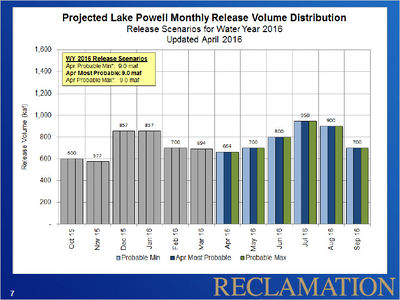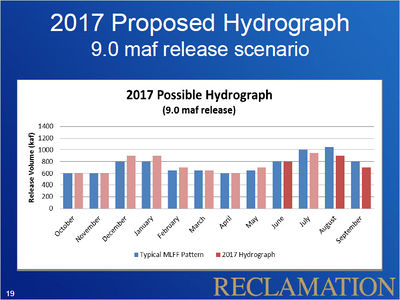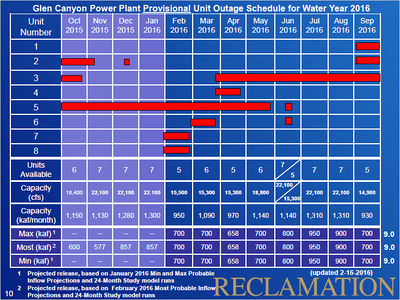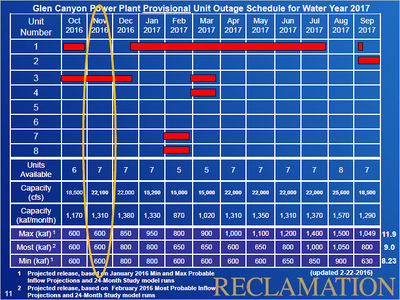- Fact Sheets
- Training
- Knowledge Assessments
- Trivia
- Key Topics
Difference between revisions of "GCDAMP Glen Canyon Dam"
From Glen Canyon Dam AMP
Cellsworth (Talk | contribs) |
Cellsworth (Talk | contribs) |
||
| Line 92: | Line 92: | ||
|style="color:#000;"| | |style="color:#000;"| | ||
| − | *[https://www.propublica.org/article/drought-provokes-debate-on-unplugging-great-dams-of-american-west | + | *[https://www.propublica.org/article/drought-provokes-debate-on-unplugging-great-dams-of-american-west Drought be Dammed; The water crisis in the West has renewed debate about the effectiveness of major dams, with some pushing for the enormous Glen Canyon Dam on the Colorado River to be decommissioned.] |
|- | |- | ||
Revision as of 17:51, 19 July 2016
| --- | --- | --- |
|---|
|
|




